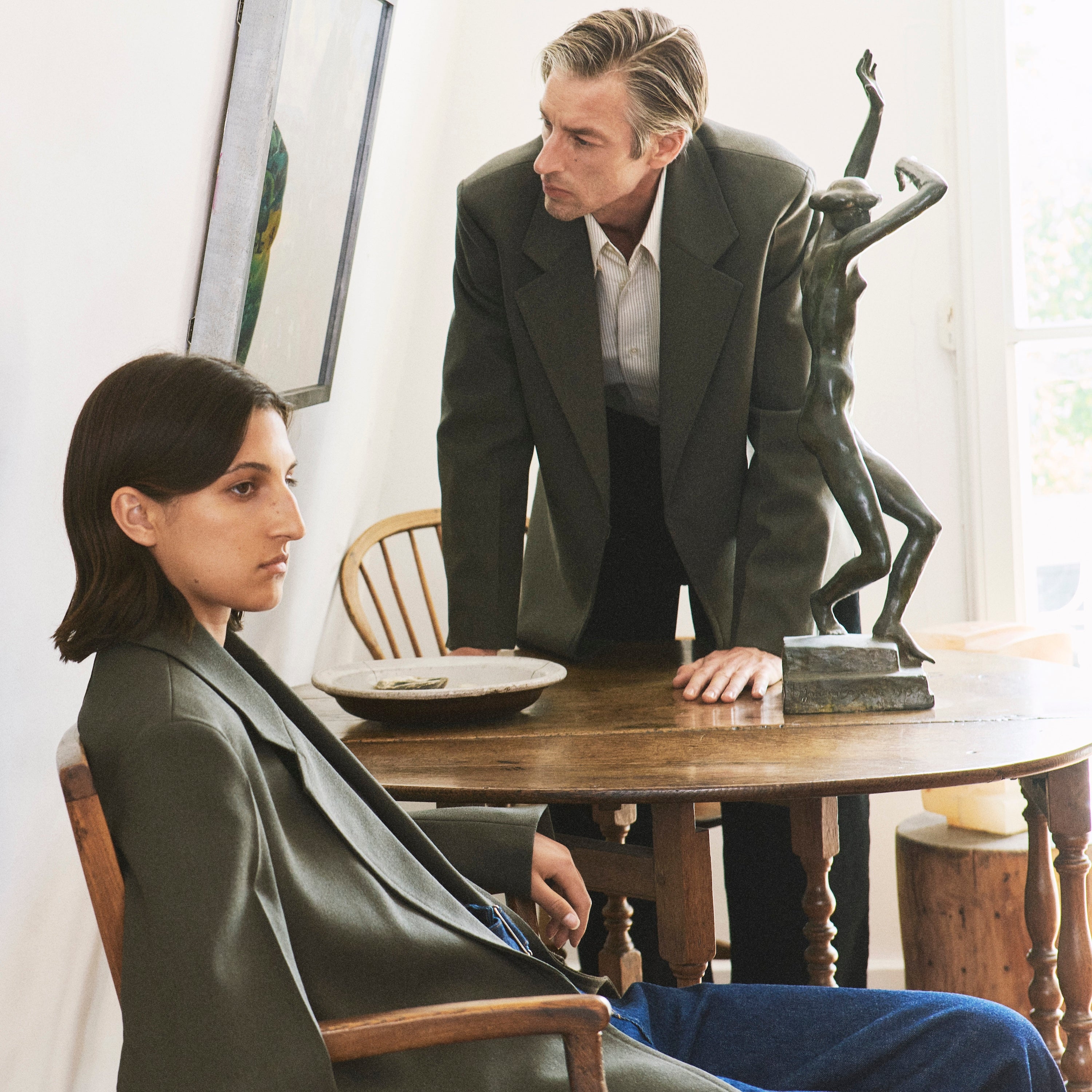





Mum always stood out from the others waiting at the school gates, she cut a lithe figure in Oxford bags, unruly hair twisted up like a brioche on the top of her head; it was such a contrast to the chattering mass of bubble perms in garish pencil skirts and scuffed stilettos. With a rusty twin-tub to man and mouths to feed, I don’t suppose she had much time to watch Woody Allen films, or read up about Land Girl garb, but she still managed to pull off her androgynous look with serious aplomb. Like me, she chose to rebuke the Hollywood notion of sexiness, preferring culottes to cleavage, with traditional shirting providing the backbone for her modest 1970s wardrobe.
During conversations I’ve had with Nick Wakeman, our shared revulsion at anything deemed girly almost always leads us back to discussions about the need to get the basics right, and how true tomboy styling is instinctive, but above all, effortless. It’s always energising to see women wearing mannish proportions, counterbalanced with the unavoidable elements of femininity – shirt sleeves rolled up to expose the wrist, collars buttoned to the top, drawing attention to the neck, or a fleeting flash of jewellery.
Women have been wearing masculine shirts since the 1920s, with the discerning female opting for compact cottons or crisp voiles, both superior quality fabrics that improve with wear and soften with washing. Wakeman’s skill at incorporating classic tailoring details, such as box pleats on the back yoke, or gussets at the side-seam hem are evident in the SS16 Sophia shirt, where she subverts menswear characteristics to create practical, clean shapes that skim the body and transcend the fickle nature of fashion. A wardrobe workhorse, it makes sense to invest wisely, because the best shirts are the ones that grow with you, a reliable and versatile sartorial canvas, manufactured to withstand the trials and tribulations of everyday life.
Leanne Cloudsdale is a writer, lecturer and creative consultant.

